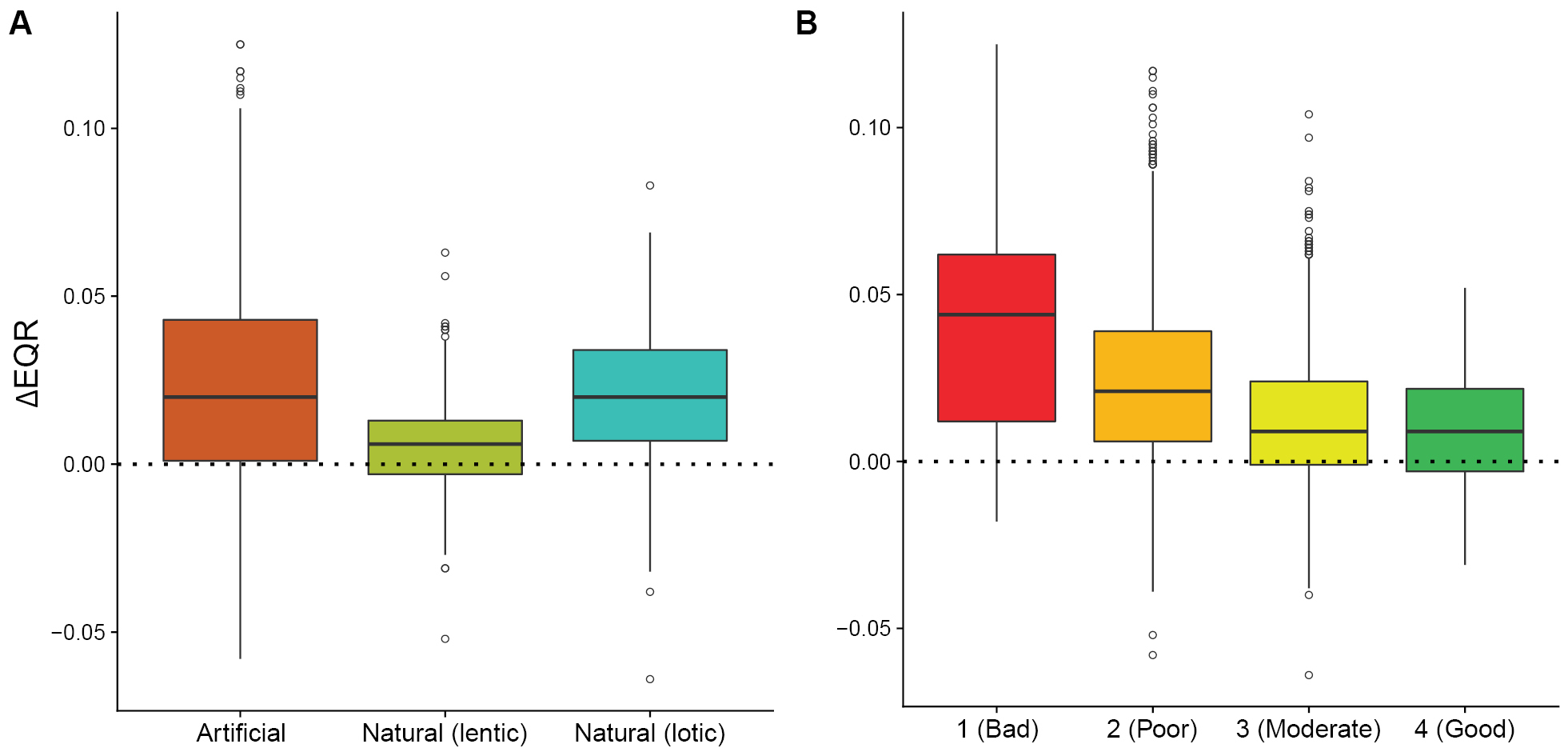
|
||
|
Factors influencing ΔEQR. Comparison of differences in EQR between assessment using abundance classes and using presence/absence data, (A) split by water type and EQR calculation method and (B) split per original assessment quality class (“high” was omitted, with only two samples in this data set). On average, classifications without abundance are higher than original assessments (ΔEQR positive). Removal of abundance resulted in significantly lower differences in natural lentic waters compared to natural lotic and artificial waters (Dunn’s test, p <0.001). There was no significant difference between lotic and artificial. Removal of abundance data has significantly more impact on EQR assessments for samples originally classified as “bad” compared to all other classes (Dunn’s test, p <0.001). ΔEQR was also significantly higher in “poor” samples compared to “moderate” and “good”. |